Search
Search Results
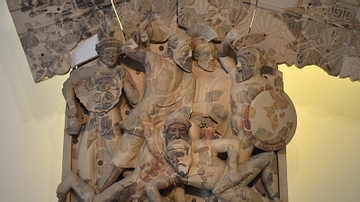
Image
Etruscan relief
High terracotta Etruscan relief depicting scenes from the myth of the Seven Against Thebes. It decorated the back of the temple of the sanctuary at Pyrgi, 470-460 BCE. (National Etruscan Museum of Villa Giulia, Rome) 'Seven Against Thebes'...
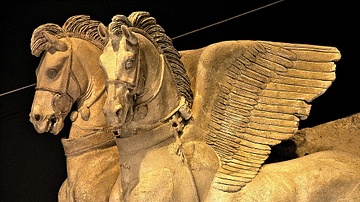
Image Gallery
A Gallery of Etruscan Art
In this gallery, we showcase 25 pieces of art produced by the Etruscan civilization which flourished in central Italy between the 8th and 3rd century BCE. Etruscan art is celebrated for its vitality, colour and capturing of everyday life...
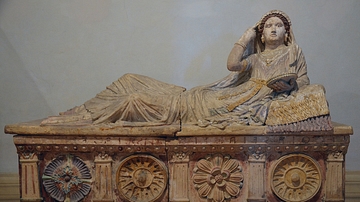
Image
Etruscan Sarcophagus of Larthia Seianti
Etruscan Terracotta Sarcophagus of Larthia Seianti, found in Chiusi, 3rd century CE. (National Archaeological Museum of Florence)
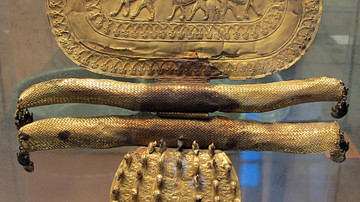
Image
Etruscan Gold Fibula, Cerveteri
A gold fibula decorated with five lions (upper portion) and 50 ducks (lower portion) from the Etruscan Regoliini-Galassi Tomb at Cerveteri. 7th century BCE. (Museo Gregoriano Etrusco, Vatican Museums, Rome)
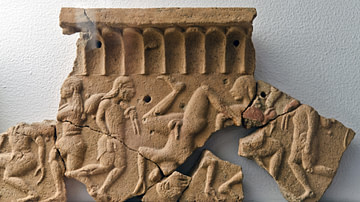
Image
Etruscan Dancers, Acquarossa
A revetment plaque depicting dancers. Terracotta, Portico Building A, Acquarossa. 6th century BCE. (National Etruscan Museum of Viterbo, Italy)
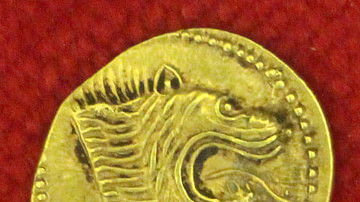
Image
Etruscan Gold Coin
Etruscan gold coin from Populonia, 5th century BCE.
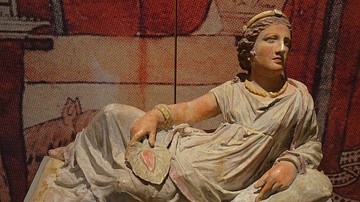
Image
Etruscan Funerary Portrait
The lid of an Etruscan funerary urn portraying the occupant. Painted terracotta Chiusi, 150-120 BCE. (Badisches Landesmuseum Karlsruhe, Germany)
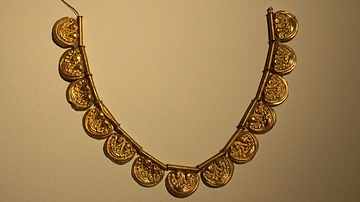
Image
Etruscan Gold Necklace
An Etruscan gold necklace with lotus flower decoration. Vetulonia, 7th century BCE. (Temporary exhibition at the Rijksmuseum van Oudheden, Leiden, Netherlands)
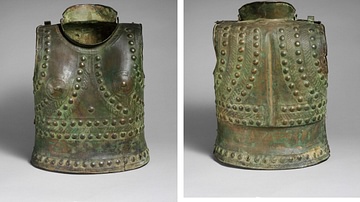
Image
Etruscan Bronze Cuirass
A c. 7th or 6th Century BCE Etruscan breastplate. This breastplate or cuirass bears similarities to an ancient Greek "muscle cuirass", because it is modeled after a human torso with features such as pectoral muscles and a spine. From the...

Image
Etruscan Model Liver For Divination
A bronze model of a sheep's liver which was used to train Etruscan priests so that they could divine meaning from the livers of sacrificed animals. The liver is divided into 40 sections with 24 gods named in the inscriptions. From Piacenza...